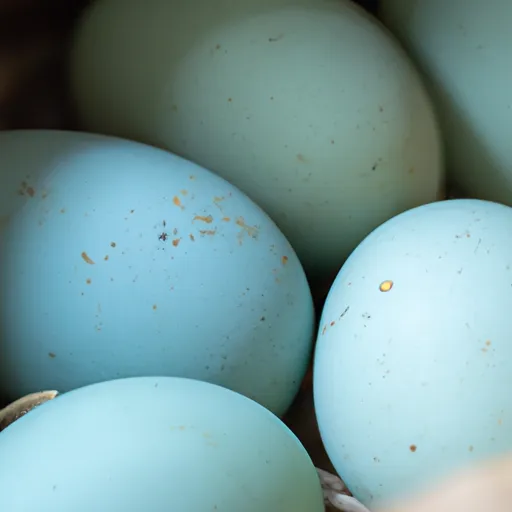Blue Eggs, Green Pastures: The Benefits of Raising Blue Egg-Laying Chickens on a Small Farm
If you’re looking for an interesting and unique addition to your small farm or backyard flock, consider raising blue egg-laying chickens.
These birds are not only beautiful but also provide many benefits that other breeds may not offer.
In this article, we will explore the world of blue eggs, discuss why they are so beneficial, and give you tips on how to raise them successfully.
Benefits of Raising Blue Egg-Laying Chickens on a Small Farm
One of the most obvious benefits of raising blue egg-laying chickens is their stunning appearance.
Their eggs stand out from the typical brown or white eggs found in grocery stores, making them perfect for adding visual interest to your breakfast table.
But beyond their beauty, there are several other reasons why these birds are great for small farms.
Firstly, blue egg-laying chickens tend to be more docile than other breeds, making them easier to handle and care for.
They are also known for being excellent layers, with some breeds laying up to 250 eggs per year.
This means that you can enjoy fresh eggs all year round without having to worry about a drop in production during certain seasons.
Another benefit of raising blue egg-laying chickens is that they require less space than other larger breeds.
This makes them ideal for those who have limited room in their yard or farm.
Additionally, because they are smaller, they consume fewer resources such as feed and water, which can help lower your overall costs of raising chickens.
Choosing the Right Breed for Your Needs
There are several different breeds of blue egg-laying chickens available, each with its own unique characteristics.
See also How to Care for Chickens that Lay Dark Brown Eggs: A Beginner's Guide
Some popular options include:
- Ameraucanas
- Araucanas
- Easter Eggers
When choosing a breed, it’s essential to consider your needs and goals for raising chickens.
For example, if you want a bird that lays large numbers of eggs, then you might prefer an Ameraucana or Araucana.
On the other hand, if you prioritize a calm temperament, then an Easter Egger might be a better fit.
Setting Up a Coop and Run for your Blue Egg-Laying Chickens
Once you’ve chosen the right breed for your needs, it’s time to set up a coop and run for your new chickens.
Because blue egg-laying chickens are smaller than other breeds, they don’t need as much space.
However, it’s still crucial to provide them with adequate shelter and protection from predators.
A standard rule of thumb is to allow at least four square feet per bird inside the coop and six square feet outside in the run.
When designing your coop and run, make sure to incorporate features like roosting poles, nest boxes, and a cleanout door to make caring for your chickens easier.
You should also ensure that the area has good ventilation and lighting to keep your birds healthy and happy.

Collecting and Storing Blue Eggs
Finally, once your blue egg-laying chickens start producing eggs, you’ll need to collect and store them properly.
One advantage of blue eggs is that they are often stronger and more durable than other colors, making them less likely to crack or break when collected.
To avoid damaging the eggs, use a soft-bristled brush to gently remove any debris or dirt before placing them in cartons.
See also Why Custom Chicken Coops are the Best Choice for Your Backyard Flock
When storing blue eggs, it’s best to keep them refrigerated in the original carton they were collected in.
Make sure to label the carton with the date the eggs were laid so that you know when to use them.
If stored correctly, blue eggs can last up to five weeks in the fridge.
Raising blue egg-laying chickens on a small farm can be a rewarding experience both visually and practically.
By selecting the right breed, setting up appropriate housing, and collecting and storing eggs properly, you can enjoy fresh blue eggs all year long while also providing your family with high-quality protein.
So go ahead – add a little color to your life and consider raising blue egg-laying chickens today!
